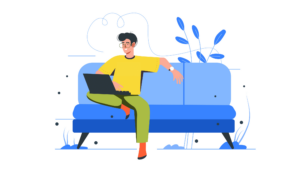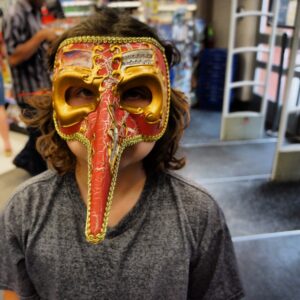It’s not news that we spend a lot of time on social media and online communities; what is interesting about our interactions with others online is that they’re basic necessities, just like food, water and shelter.
In 1986, social psychologists McMillan & Chavis developed the definition of community as “a feeling that members have of belonging, a feeling that members matter to one another and to the group, and a shared faith that members’ needs will be met through their commitment to be together.”
Humans are actually hardwired to participate in communities because they offer a sense of connection, empathy and mutuality.
The human sense of community has been under development since long before electricity, let alone the internet age. Still, it’s absolutely apropos and relevant as applied to today’s online communities.
So let’s have a look at what’s behind this phenomenon and check out a real-life example of a community that has developed entirely online.
Social Networks v. Online Communities:
At the outset, it’s important to note that communities are distinct from social networks like Facebook and Twitter. For the most part, social networks are founded on existing interpersonal relationships, such as friends, family, co-workers and others.
Users generally join them to maintain relationships and connect with others. Of course, social networks do serve as community.
But a true online community develops out of a shared interest, goal or preference; most often, users have no prior personal or professional relationship.
Users come together from a wide variety of backgrounds and they join the community to benefit from participating in it. An example is Flickr, developed by photography enthusiasts who share a common interest in their hobby.
Communities Throughout History:
Since the dawn of time, humans have been developing communities, initially to support each other in accomplishing group tasks. Early on, we realized that hunting, gathering and agriculture were easier with a helping hand.
From there, humans established some of the first civilizations: Communities bound together by the common goal of survival.
Evolution even supports the concept of human communities. Over millions of years, mutations in the brain that made us more social were rewarded – and passed on to the next generation. In time, our brain began to seek social connections with others because our success as human beings relied upon these relationships.
As Matthew Lieberman, Professor of Psychology at UCLA states, “Being socially connected is our brain’s lifelong passion…It’s been baked into our operating system for tens of millions of years.”
Community Building Blocks:
McMillan & Chavis identified four components necessary to the development of any community:
- Membership: There must be some sort of boundaries that distinguishes members of the community from non-members, i.e., geography, education, language or gender.
- Influence: This refers to the level of participation in the group. Members are influenced by others, but they’re also empowered to contribute their own influence as well.
- Fulfillment: A person becomes a member of a community for a reason and it’s this fulfillment that gives them the satisfaction.
- Shared Emotional Connection: Members of a community are invested in the group because they share emotional commonality that goes beyond mere interest.
In the online world, communities are built upon these components, but there are additional factors that establish them. Engagement with other members is necessary to learn more about their motivations and improve the group experience.
In addition, online communities function best if they stick to a simple, focused central theme. Building a community around a broad topic dilutes the four components, as described by McMillan & Chavis.
A Look at an Online Community:
A fun example of a thriving online community is Threadless, a platform where artists and designers unite to share their creations. Every week, approximately 1000 designs submitted and posted for a public vote; at the end of the week, the staff tallies the votes, looks at average score and reviews feedback from community members.
Ten are chosen for printing on clothing, stickers, coffee mugs and other consumer products, which are sold online, or at the company’s retail shop in Chicago. Designers earn royalties based upon how much they sell.
The Threadless community embodies the four features mentioned above – as well as the factors that make an online community successful. The company’s founders even published a book describing its rise to glory, entitled “Threadless: Ten Years of T-Shirts from the World’s Most Inspiring Online Design Community.”
Originally appeared on SAP Commerce






